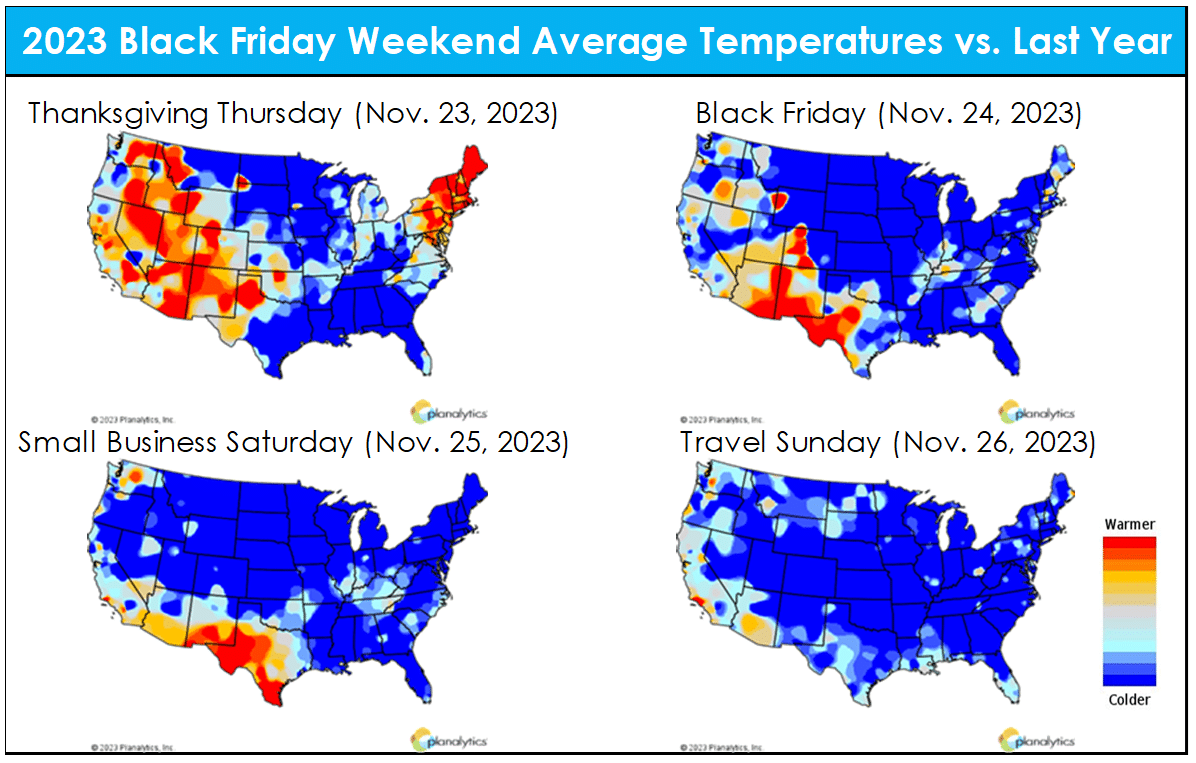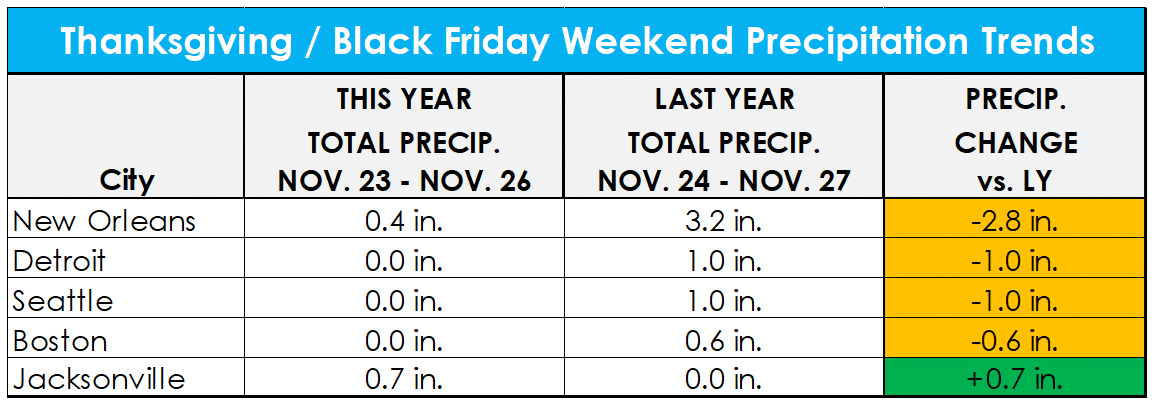The Coldest Black Friday Weekend in 10 Years Had Consumers Gobbling Up Seasonal Categories
Driest Holiday Weekend Since 2017 Supported Foot Traffic into Shopping Destinations
The Thanksgiving and Black Friday weekend (November 23 – November 26) was the coldest since 2013 and driest since 2017, helping to kickstart the holiday shopping season with strong seasonal demand. On the heels of a mild week across the U.S., and a very warm Fall season to date, Mother Nature provided businesses with an early season gift across most markets which experienced colder temperatures and drier conditions to last year.

The cold conditions to last year helped increase demand for seasonal apparel such as sweaters, jackets, hats, and gloves. Demand increases for these traditional holiday gift-giving categories came an at ideal time as many retailers have blamed poor business performance on warmer weather for much of the Fall season. Shoppers were also purchasing need-based consumables such as hot foods, warm drinks, and firelogs. The weather provided a tailwind to the outlook from the National Retail Federation (NRF) who expects total holiday sales to grow between 3% and 4% compared to 2022.
Markets with notable cold temperatures to last year include San Antonio, which had its coldest holiday weekend since 2007. St. Louis had its coldest holiday weekend since 2013, Minneapolis since 2014, and Dallas since 2015. Philadelphia and Denver were coldest since 2019. Conversely, Los Angeles, San Diego, Las Vegas, and San Francisco were slightly warmer than last year.
Conditions were mostly dry over the holiday weekend with no ‘traffic limiting events’, helping to lift footfall into shopping destinations such as malls, outlet centers, and restaurants. Early week rain and snowfall abated for most by Thanksgiving Day, and conditions remained mostly dry in large population centers over the weekend. Markets with little to no precipitation over the weekend include Miami, Boston, Detroit, Minneapolis, and Los Angeles. Baltimore had its driest holiday weekend since 2017 and Dallas was driest in 5 years. Rain and snowfall were limited in totals for the weekend. The heaviest snowfall was in the Rocky Mountains and Central Plains. Denver and Wichita had their most holiday snowfall in 25 years. Light snow arrived in the Midwest and Great Lakes by the end of the weekend.
Retail sales in stores and online both increased on Black Friday. According to Sensormatic Solutions, store visits on Black Friday were up +4.6% from last year. Mastercard’s SpendingPulse insights noted that Black Friday sales in stores increased by +1.1%. According to Adobe Analytics, consumers spent $5.6 billion online on Thanksgiving Day, representing a +5.5% increase over last year. On Black Friday, consumers spent a record $9.8 billion online, representing a +7.5% increase over last year.
Looking ahead, Cyber Monday (November 27) will lead into high volume shopping days in December. For reference, December 2022 was the coldest since 2017 and wettest since 2019.




